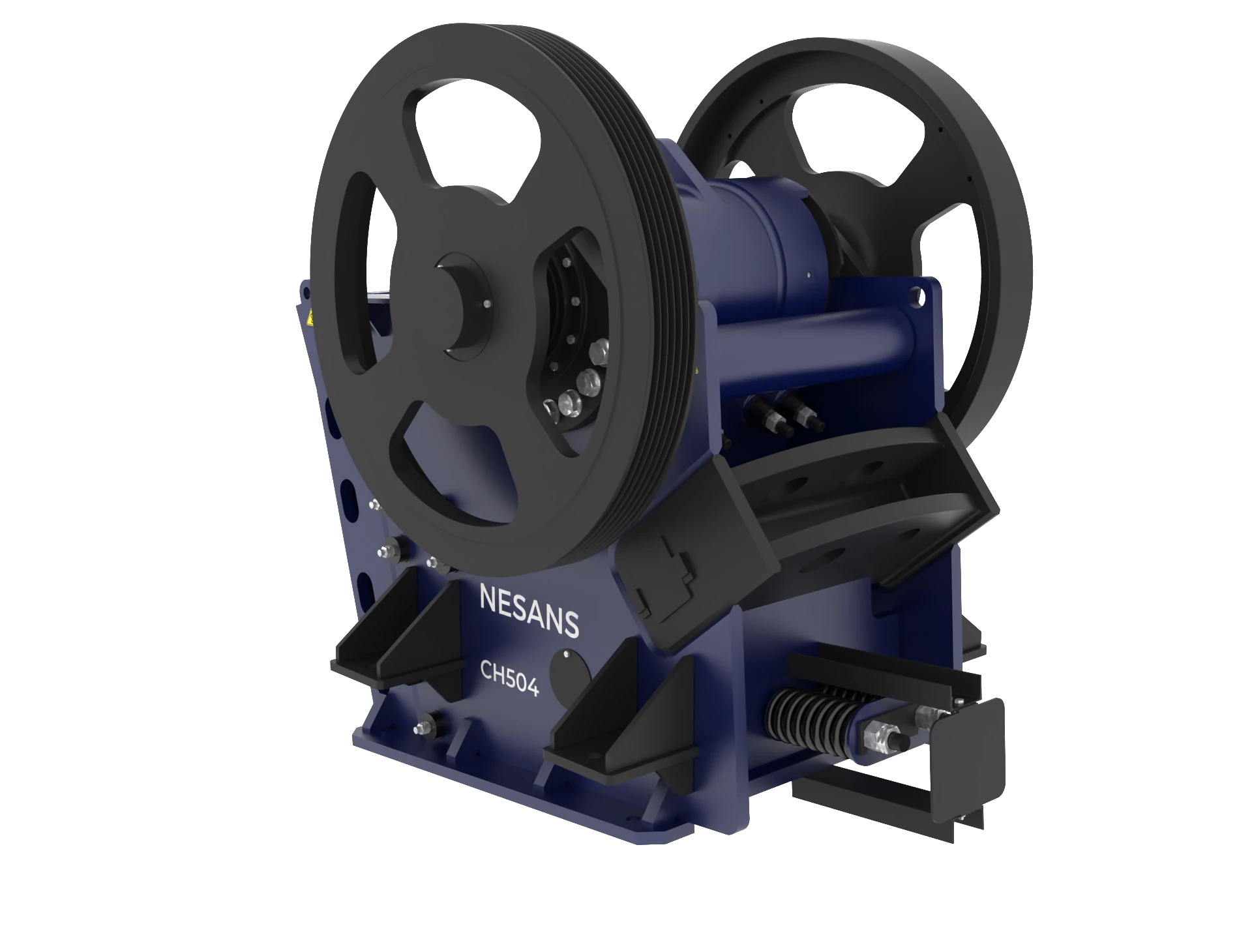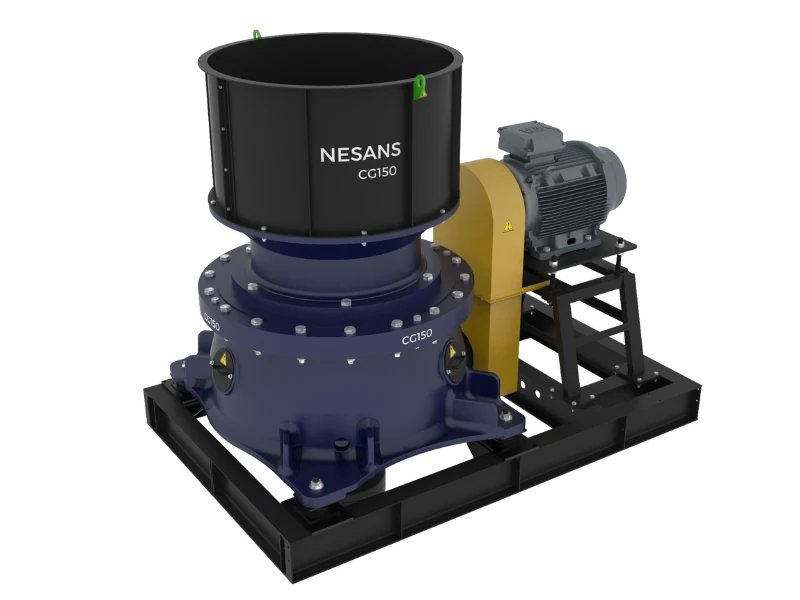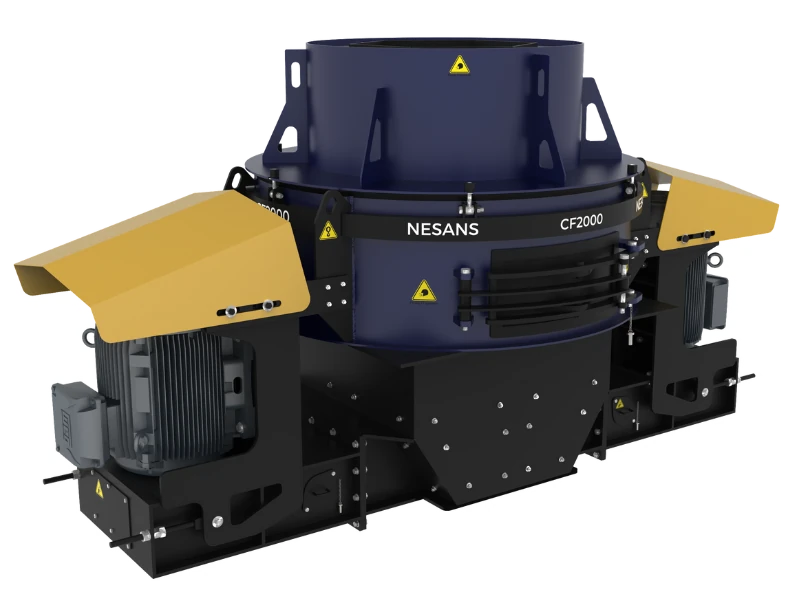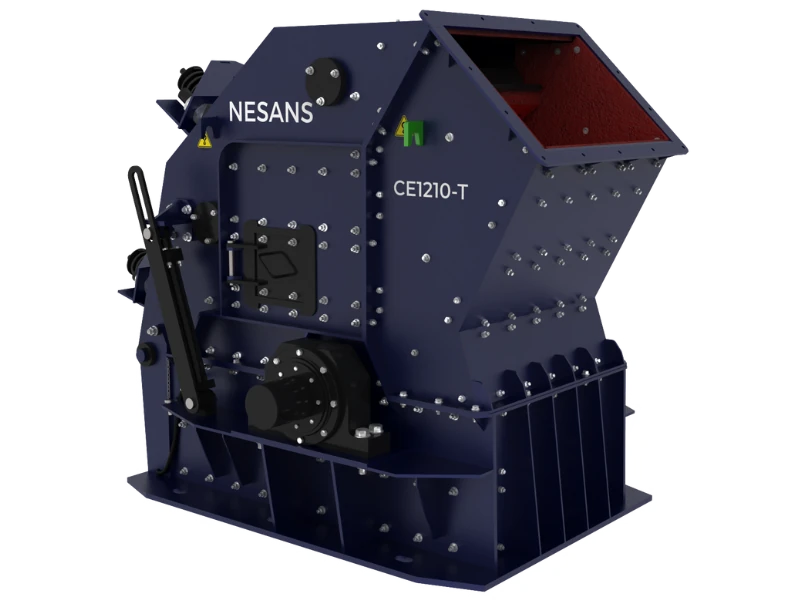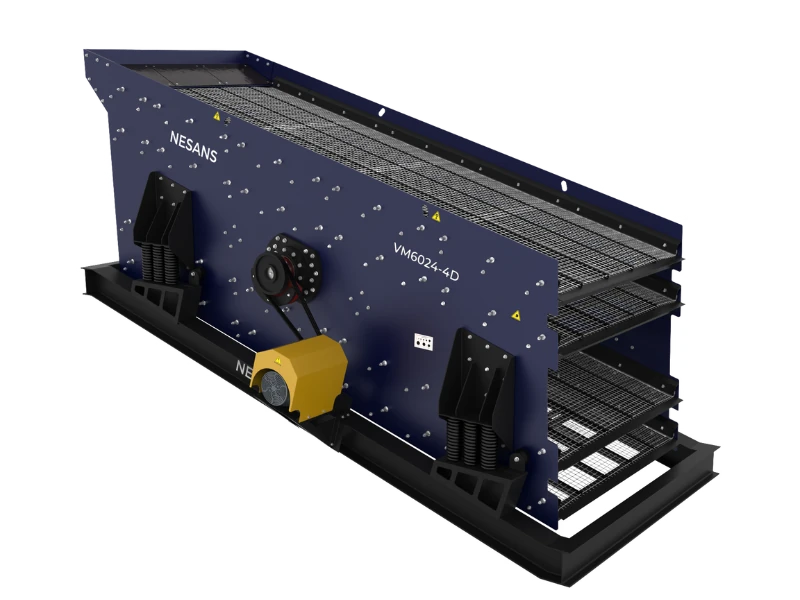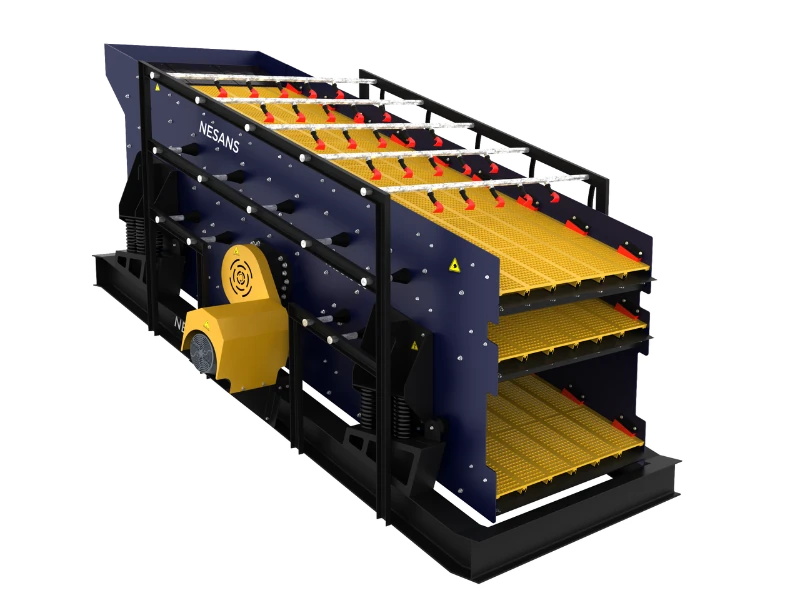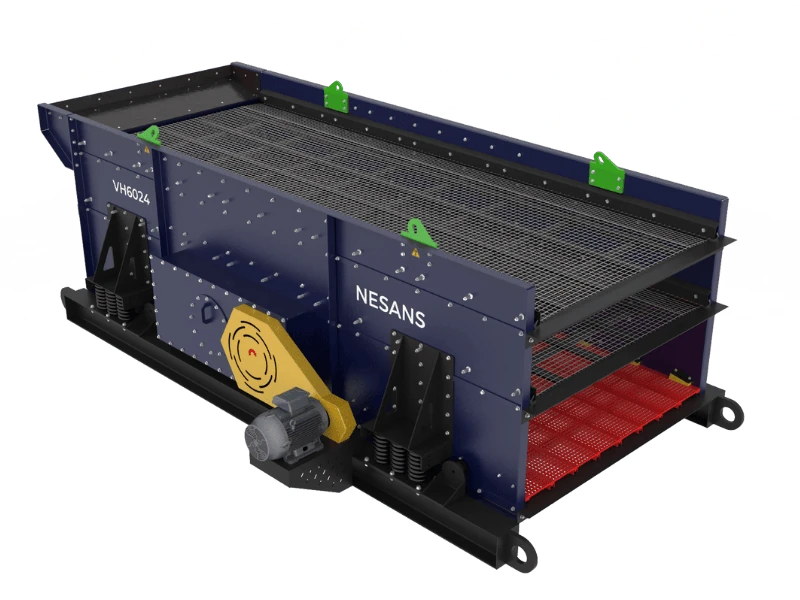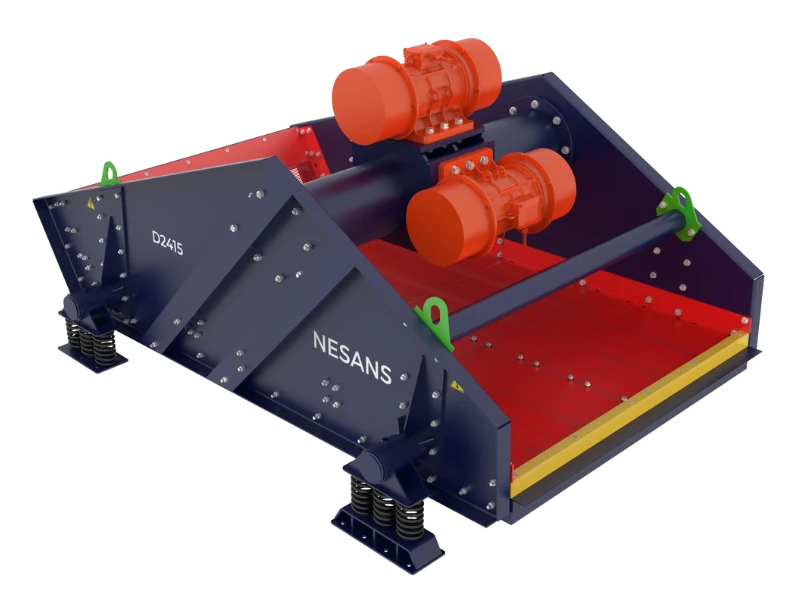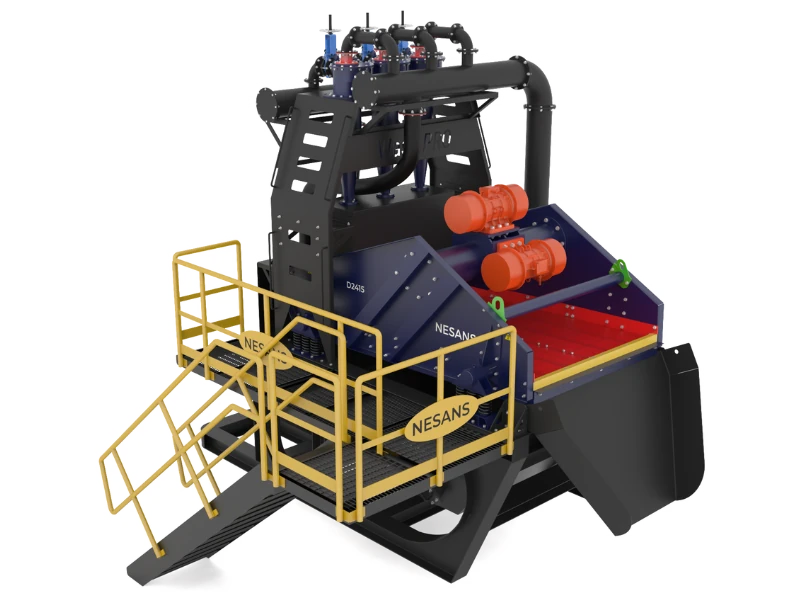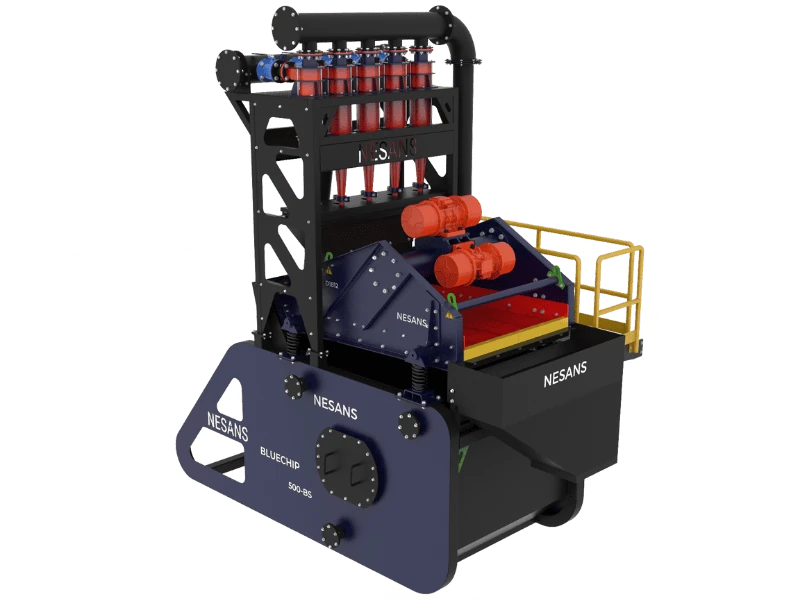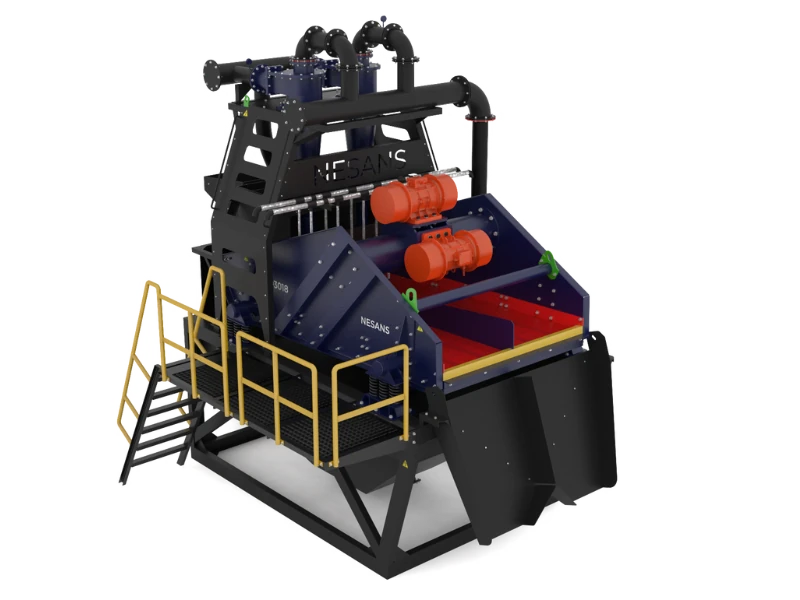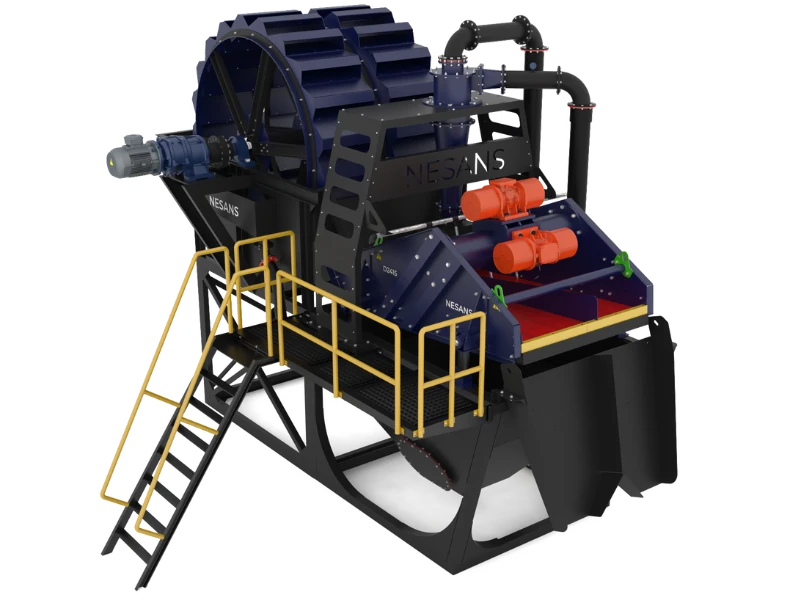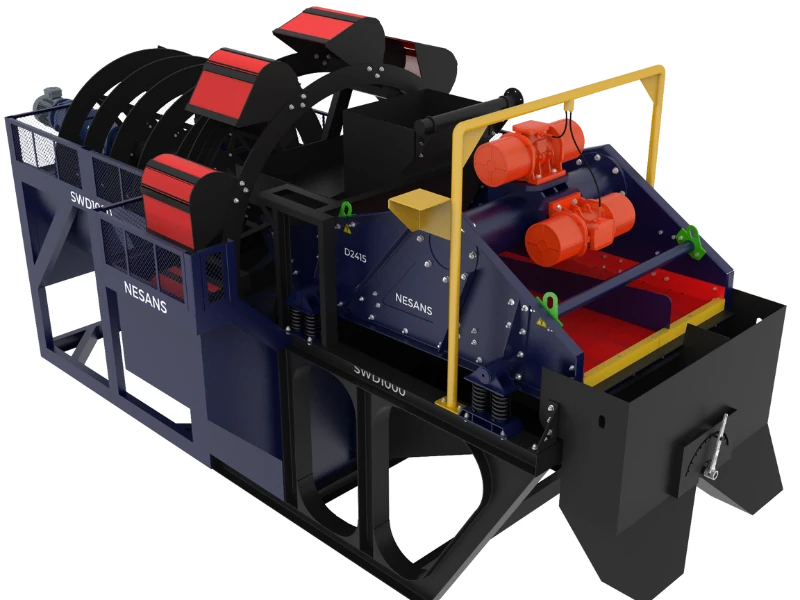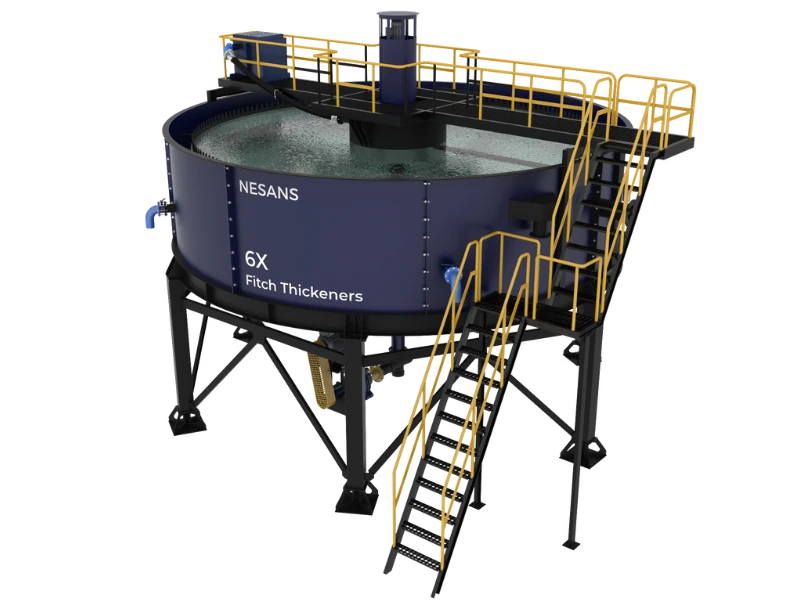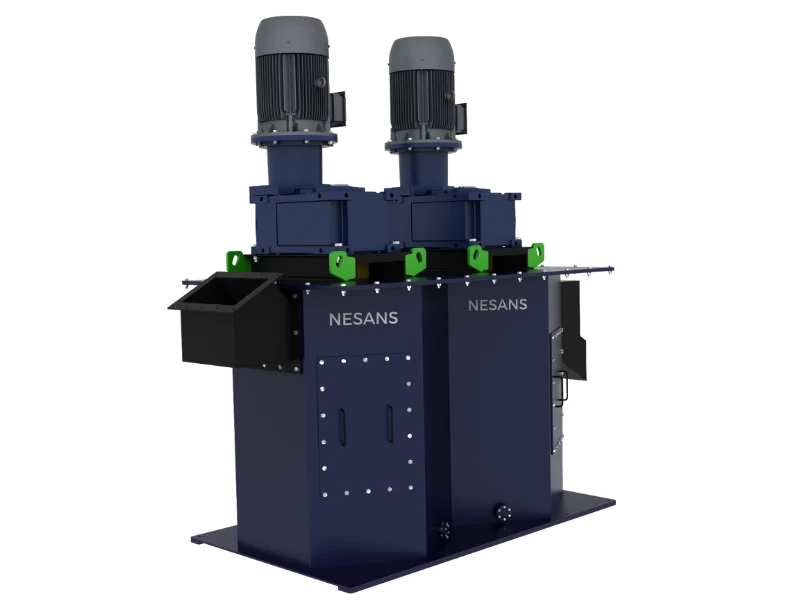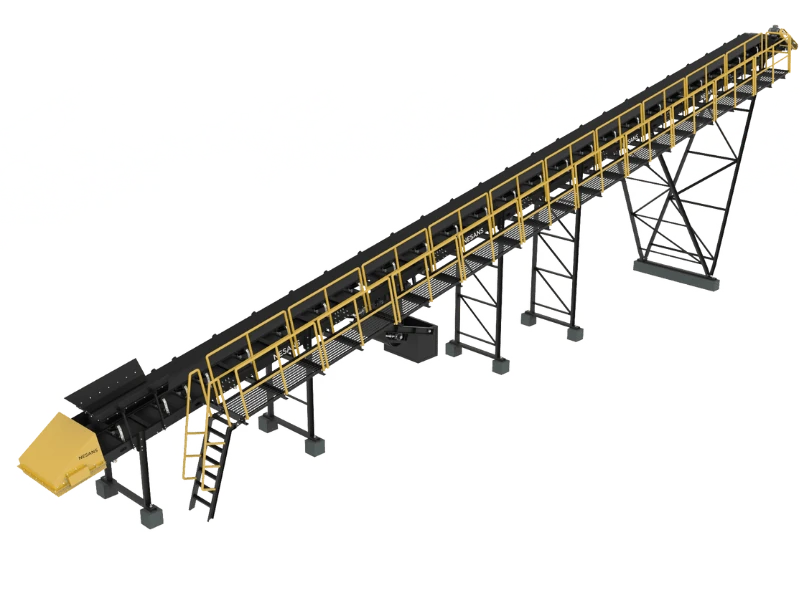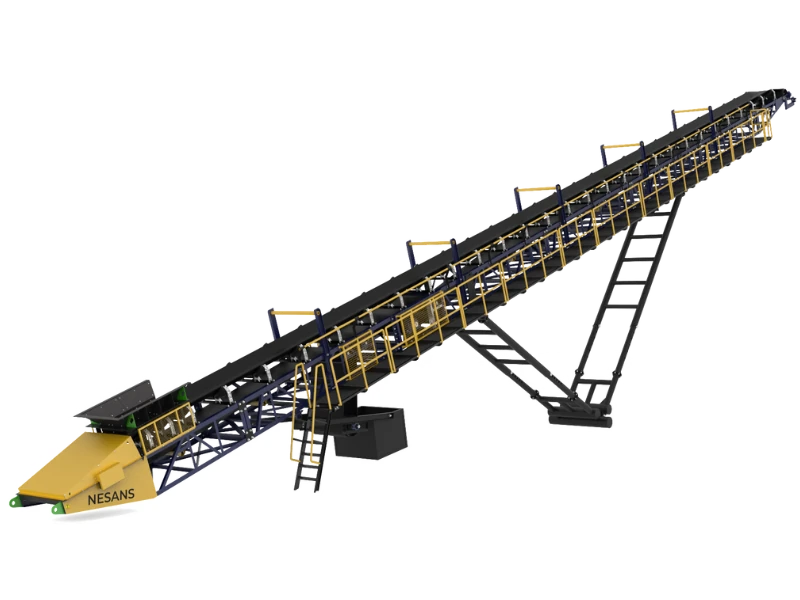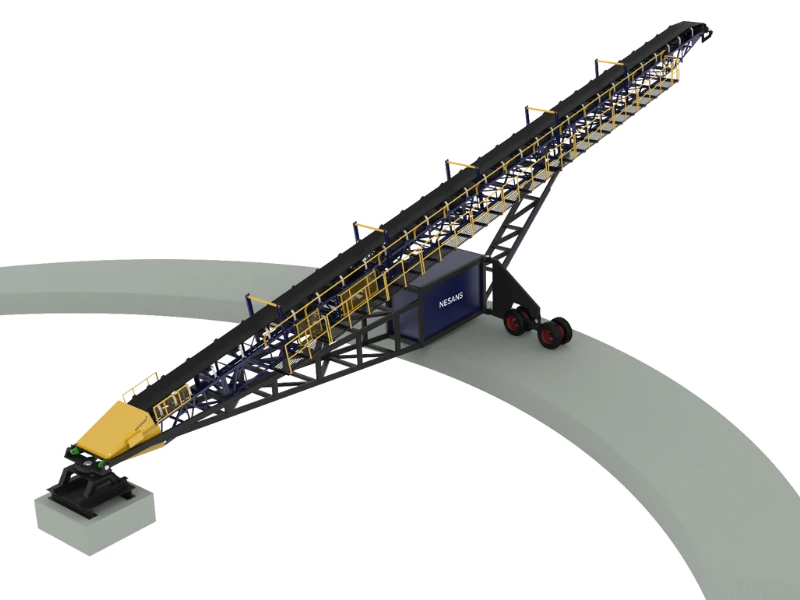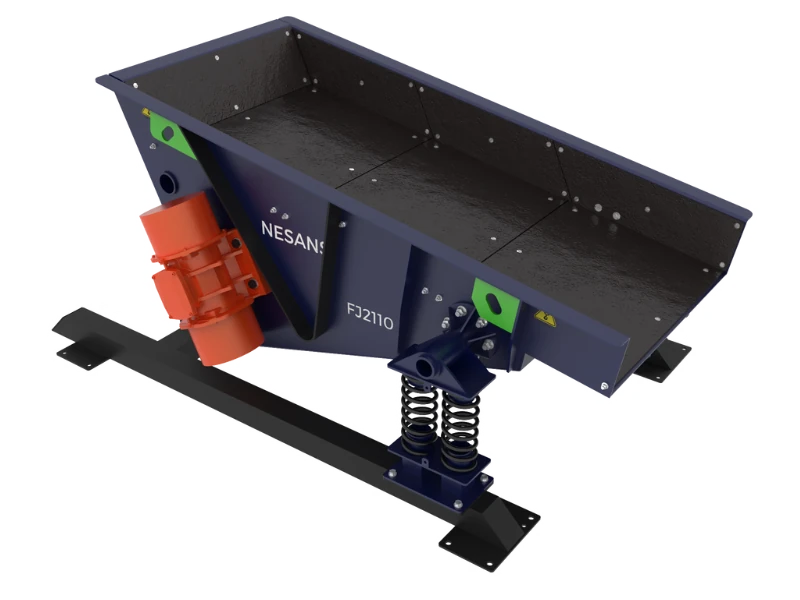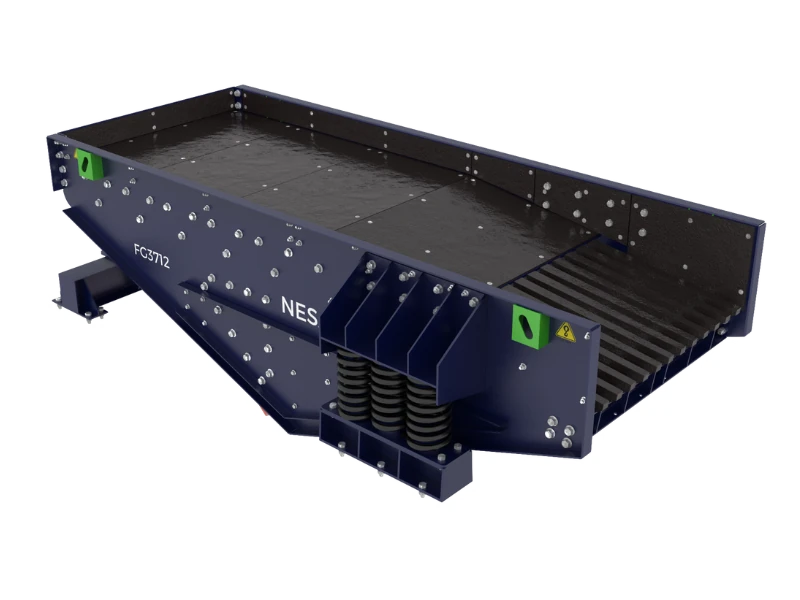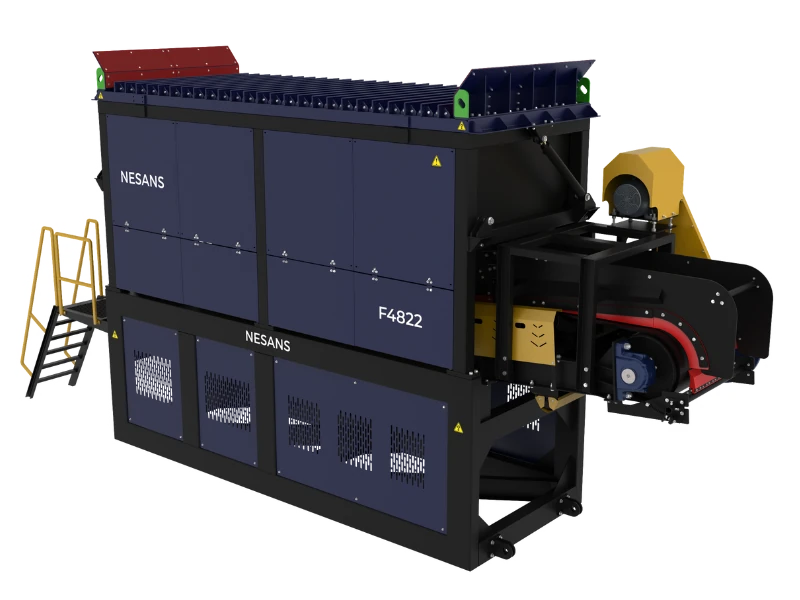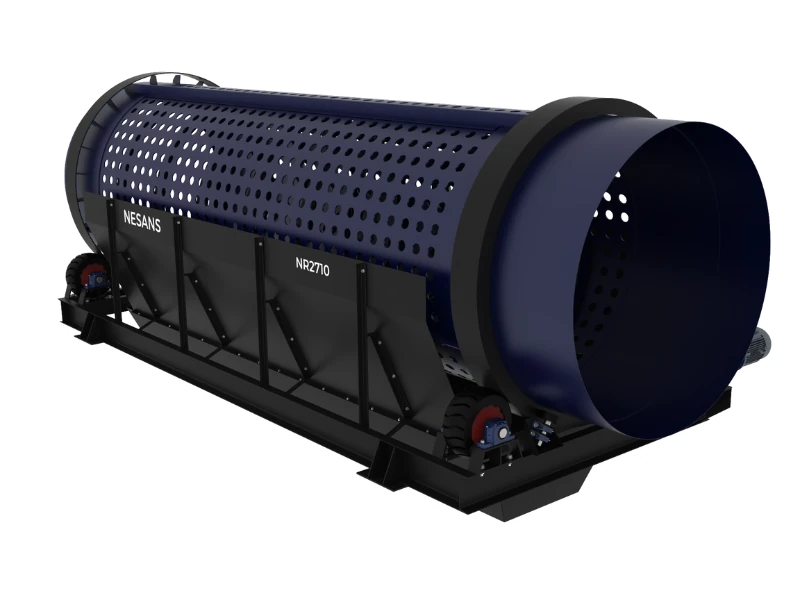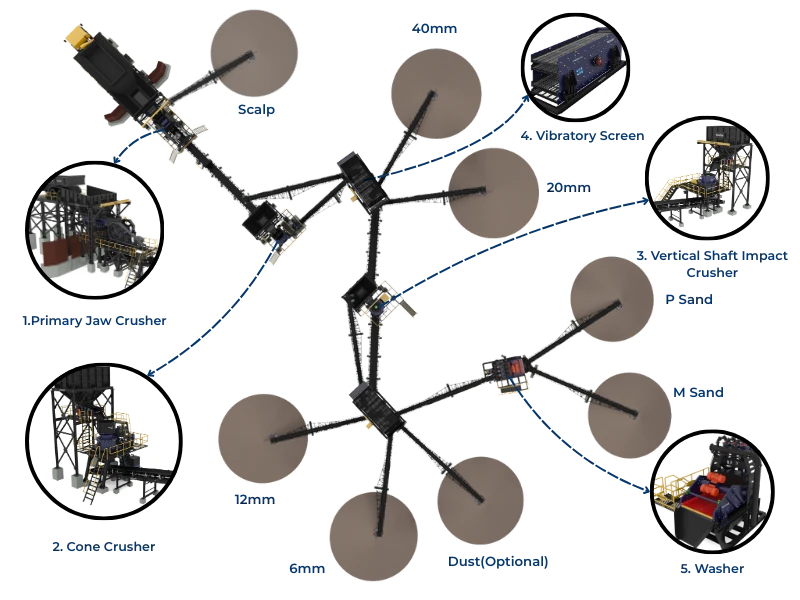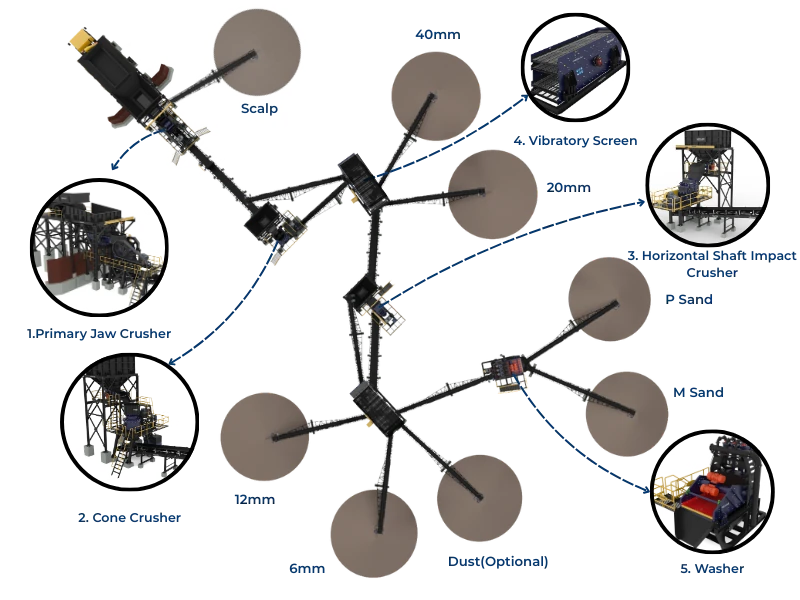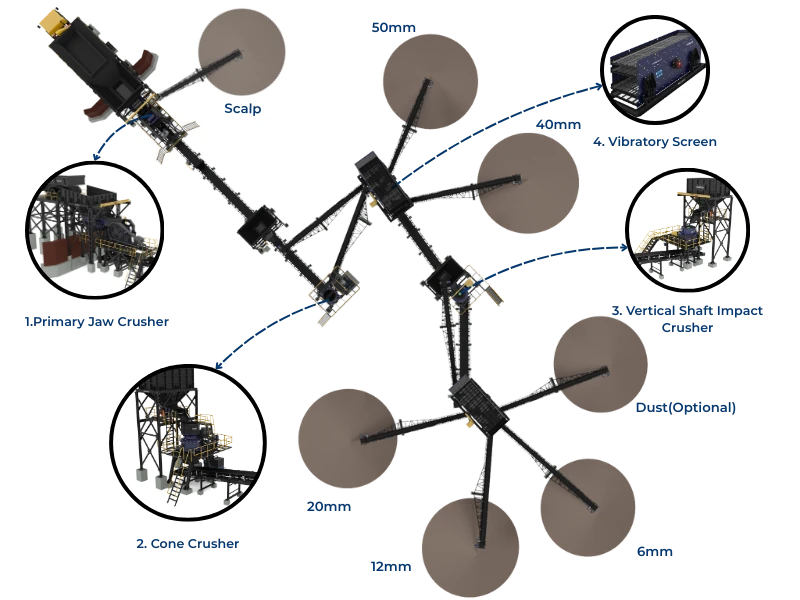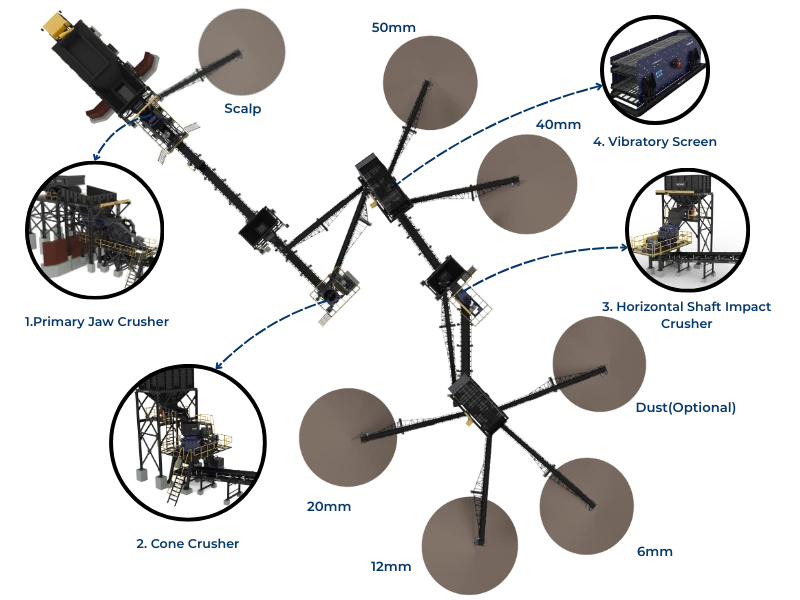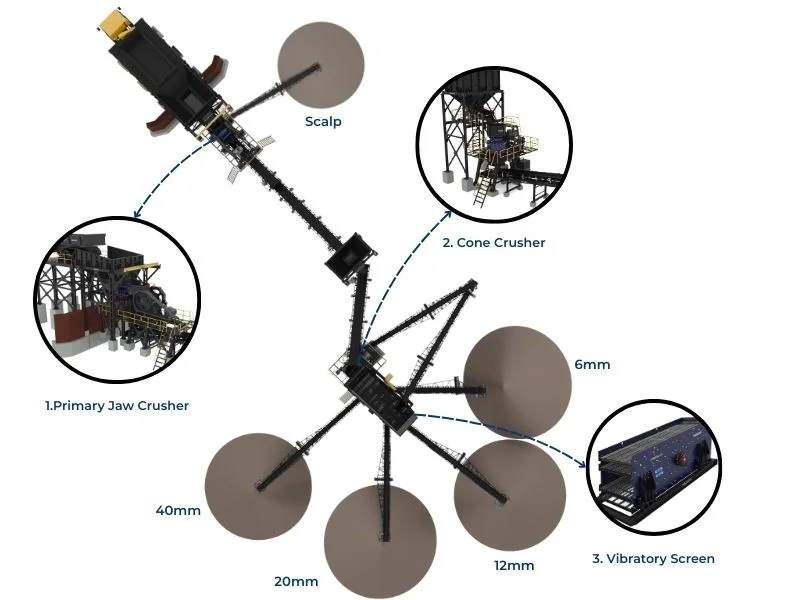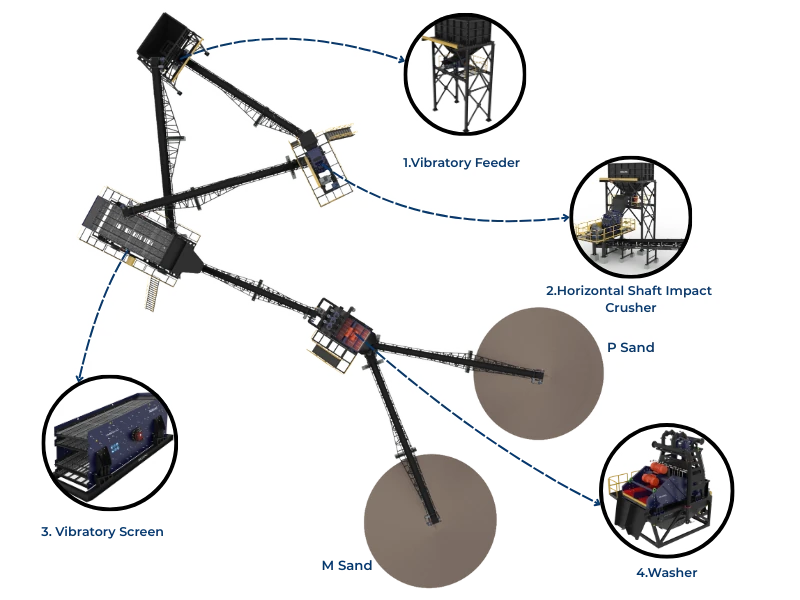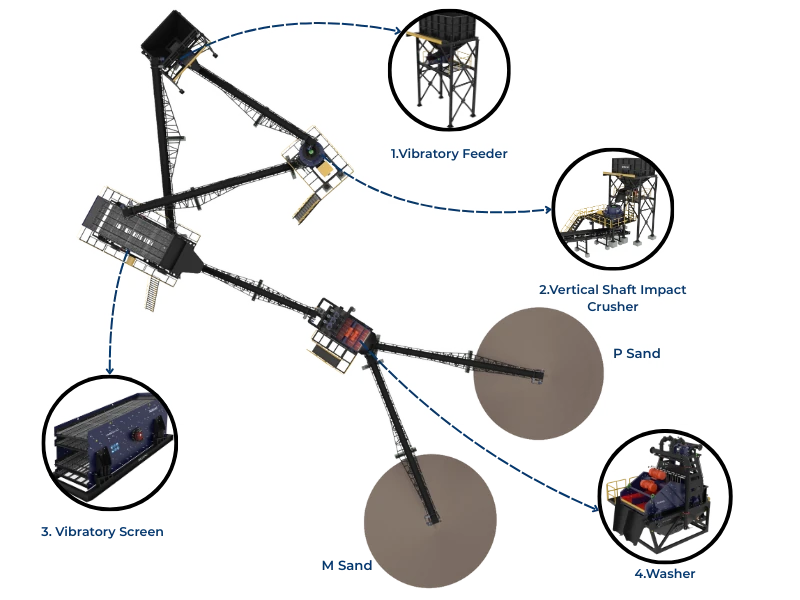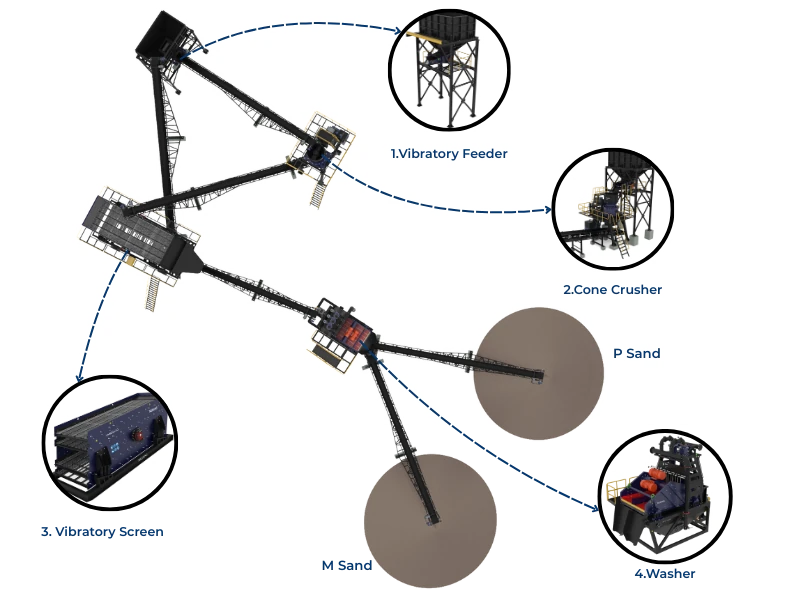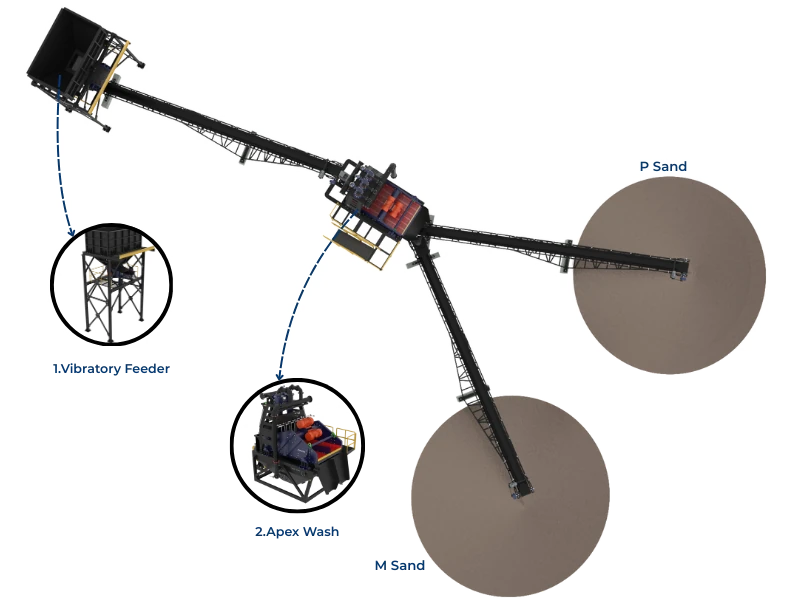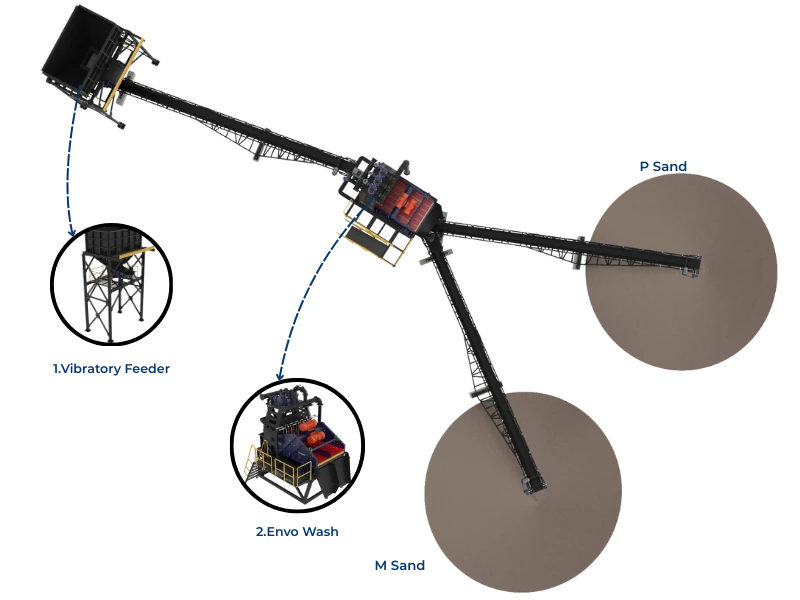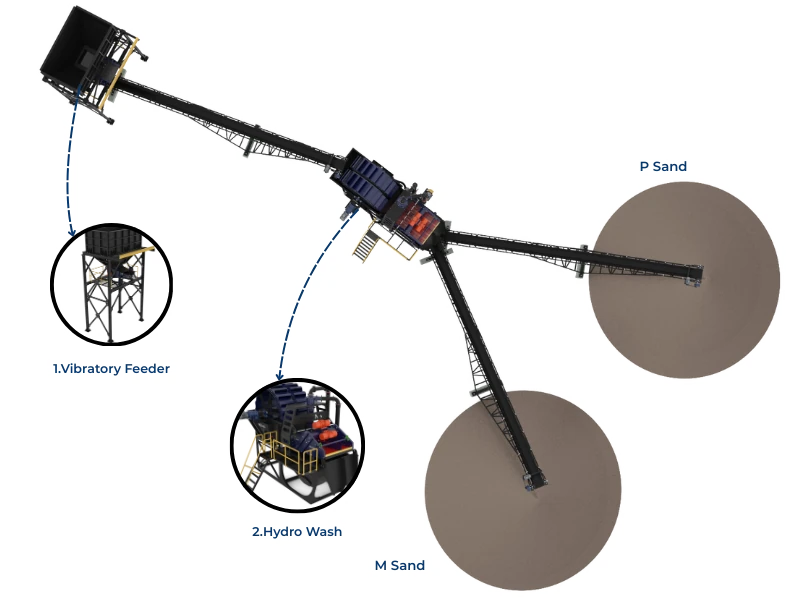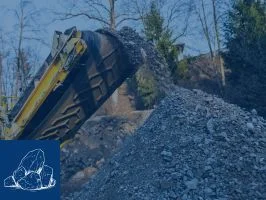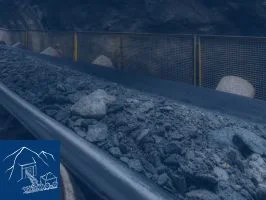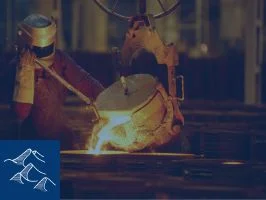Your silica sand meets 99.2% SiO₂ purity on paper, yet glass manufacturers reject it due to iron staining. You've invested in washing, but yellowish discoloration persists—costing you ₹500/ton in lost premium pricing. The problem isn't insufficient washing; it's that surface washing doesn't remove iron oxide coatings adhered to particle surfaces. This requires attrition scrubbing—a mechanical process that removes surface films while preserving particle integrity, adding ₹500-800/ton to product value.
Silica sand quality extends far beyond chemical composition. Brightness, particle shape, and surface cleanliness determine whether material commands premium prices for glass manufacturing, foundries, and industrial applications—or gets relegated to construction fill at commodity rates. Iron oxide contamination, even at trace levels (0.03-0.08% Fe₂O₃), creates visual discoloration and processing issues that eliminate high-value applications. Yet this contamination is often removable through proper attrition scrubbing—a process that mechanically abrades particle surfaces without crushing.
This guide examines the engineering principles behind attrition scrubbing, focusing on how controlled mechanical abrasion removes iron contamination while preserving silica purity and particle size distribution—transforming commodity sand into premium industrial material.
Understanding Iron Contamination in Silica Sand
Sources and Forms of Iron
Iron contamination in silica sand exists in multiple forms, each requiring different removal strategies:
Surface Coatings (70-85% of iron content):
- Hematite (Fe₂O₃) and goethite (FeOOH) films 0.5-5µm thick adhered to quartz surfaces
- Created by weathering of iron-bearing minerals (pyrite, magnetite) in source formation
- Mechanically removable through attrition—don't require chemical treatment
- Responsible for yellow-brown discoloration even at 0.03-0.05% Fe₂O₃ content
Discrete Iron Mineral Particles (10-20% of iron):
- Liberated magnetite, ilmenite, or hematite grains 50-500µm size
- Removable through magnetic separation or gravity concentration
- Higher density (4.5-5.2 g/cm³) vs. quartz (2.65 g/cm³) enables physical separation
Structural Iron (5-10% of iron):
- Iron substituted within quartz crystal lattice during formation
- Not removable through physical processing—requires chemical leaching
- Typically <0.01% Fe₂O₃ in high-purity deposits
⚠️ Impact on Market Value: Silica sand with 0.08% Fe₂O₃ (80% surface coating, 20% discrete particles) sells for ₹1,000-1,200/ton for construction applications. The same deposit processed through attrition scrubbing and magnetic separation achieves 0.02-0.03% Fe₂O₃, qualifying for glass-grade specifications at ₹1,800-2,200/ton—an ₹800-1,000/ton premium. For a 100 TPH plant, this represents ₹16-20 lakhs daily additional revenue (₹4.8-6 crores/month).
Attrition Scrubbing Principles
Mechanical Abrasion Mechanisms
Attrition scrubbing uses particle-on-particle and particle-on-impeller contact to mechanically remove surface coatings without crushing quartz grains.
Key Design Parameters:
- Impeller Tip Speed: 15-25 m/s creates sufficient shear for coating removal without particle fracture
- Slurry Density: 60-75% solids by weight—high enough for particle contact, low enough for mobility
- Residence Time: 5-12 minutes depending on contamination level and target cleanliness
- Temperature: Ambient to 40°C—no heating required for iron oxide removal
- pH Control: 7-9 range—neutral to slightly alkaline enhances iron oxide dispersion
Scrubbing Intensity and Energy Input
Attrition intensity must balance coating removal against particle breakage. Excessive intensity fractures quartz, creating fines and reducing recovery.
Specific Energy Input:
- Low Intensity: 8-12 kWh/ton—suitable for light iron staining (0.05-0.08% Fe₂O₃)
- Medium Intensity: 12-18 kWh/ton—standard applications with 0.08-0.15% Fe₂O₃
- High Intensity: 18-25 kWh/ton—heavy contamination or clay-bonded iron films
For a 100 TPH silica sand plant targeting 0.03% Fe₂O₃ from 0.10% feed:
- Attrition cell power: 150-200 kW per cell
- Throughput per cell: 40-60 TPH at 70% solids density
- Number of cells required: 2 units for 100 TPH production
- Operating cost: ₹12-16/ton at ₹8/kWh power rate
Attrition Cell Design and Configuration
Vertical Attrition Cells
Vertical attrition scrubbers use bottom-mounted impellers in cylindrical tanks, creating upward slurry circulation with controlled shear zones.
Design Features:
- Tank Geometry: Height-to-diameter ratio 1.2-1.8:1 for optimal circulation
- Impeller Design: 4-6 blade turbine, diameter 0.3-0.4× tank diameter
- Impeller Speed: 300-450 RPM depending on diameter (target 18-23 m/s tip speed)
- Tank Volume: 8-12 minutes retention at design throughput
- Wear Protection: Polyurethane or rubber lining in high-wear zones (tank bottom, impeller zone)
Advantages:
- Uniform residence time distribution—all particles receive similar scrubbing intensity
- Simple construction and maintenance—single impeller, minimal moving parts
- Scalable design—units available 20-100 TPH capacity per cell
- Lower capital cost than horizontal configurations
Horizontal Attrition Mills
Horizontal mills use agitated media or stirring rods in elongated vessels, providing progressive scrubbing as material advances.
Design Features:
- Agitator Configuration: Paddle or disk stirrers on central shaft, 8-16 agitator zones
- Length-to-Diameter Ratio: 3-5:1 for plug-flow progression
- Media: Optional ceramic or steel beads 3-8mm diameter for enhanced scrubbing
- Screen Discharge: Internal screens retain media while discharging slurry
Best Applications:
High-intensity scrubbing for heavily contaminated feeds, applications requiring ultrafine iron removal (<0.02% Fe₂O₃), or when combined size reduction and scrubbing is needed.
Process Integration and Circuit Design
Desliming Before Scrubbing
Remove ultra-fine particles (<20µm) before attrition to prevent re-contamination and reduce scrubbing cell loading.
Desliming Methods:
- Hydrocyclones: Cut point 15-25µm, remove clay and ultra-fine silica - Efficiency: 80-90% removal of -20µm fraction - Operating pressure: 70-120 kPa for fine-cut applications
- Spiral Classifiers: Mechanical separation at 50-75µm - Lower efficiency than cyclones but simpler operation - Suitable for coarser cut points and lower clay content
- Thickener Overflow: Natural settling removes <10µm particles - Requires long retention time (6-12 hours) but minimal energy input
Desliming typically rejects 5-15% of feed tonnage but recovers 70-85% of iron contamination. The overflow slimes contain concentrated iron and clay—valuable for cement applications or disposal rather than contaminating premium sand.
Attrition Scrubbing Stage
Post-desliming sand enters attrition cells at controlled slurry density and residence time.
Operating Parameters:
- Feed Size: -1mm + 75µm (after desliming and scalping)
- Slurry Density: 65-75% solids by weight - Too dilute: Insufficient particle contact for scrubbing - Too thick: Poor circulation and excessive power draw
- Retention Time: 8-12 minutes typical for 0.08%→0.03% Fe₂O₃ reduction - Monitor discharge brightness—increase time if target not met - Excessive time (>15 min) creates fines without additional iron removal
- Chemical Addition: Sodium silicate or dispersant at 0.5-2 kg/ton to enhance clay dispersion
Magnetic Separation Post-Scrubbing
Attrition liberates iron oxide coatings but doesn't remove them. Magnetic separation or classification captures these liberated contaminants.
Wet High-Intensity Magnetic Separator (WHIMS):
- Field Strength: 10,000-15,000 Gauss for paramagnetic iron oxide capture
- Configuration: 2-3 stage separation for maximum iron removal
- Feed Preparation: 25-35% solids density for optimal magnetic capture
- Recovery: Removes 85-95% of liberated iron oxide particles
Classification Alternative:
For very fine iron oxides (<20µm), hydrocyclone classification after scrubbing removes iron-rich fines in overflow while recovering clean sand in underflow. Less effective than WHIMS but lower capital cost.
Quality Control and Optimization
Brightness and Iron Content Monitoring
Continuous quality monitoring ensures process control and product consistency.
Brightness Testing (L* value):
- Colorimeter measurement of reflected light—quantifies whiteness/yellowness
- Target: L* >90 for glass-grade, L* 85-90 for industrial-grade
- Sample frequency: Hourly during operation, composite testing shift
- Correlates to iron content but faster than chemical analysis
Chemical Analysis (Fe₂O₃ content):
- XRF (X-ray fluorescence) or ICP analysis for precise iron quantification
- Sample frequency: Every 4 hours or per production batch
- Glass-grade specification: <0.025-0.030% Fe₂O₃ depending on application
- Foundry-grade specification: <0.05-0.08% Fe₂O₃
Process Variable Adjustment
Optimize attrition intensity based on feed characteristics and target specifications:
If brightness target not met (L* <88, Fe₂O₃ >0.035%):
- Increase impeller speed by 50-100 RPM (monitor power draw and fines generation)
- Extend residence time by 2-3 minutes (reduce throughput or add cell capacity)
- Verify slurry density 65-75%—adjust water addition if too thick or thin
- Check magnetic separator performance—may be saturated or maladjusted
- Increase desliming efficiency to remove more clay-bonded iron entering scrubber
If excessive fines generation (>5% -75µm production):
- Reduce impeller speed by 50 RPM to decrease mechanical stress
- Shorten residence time if brightness target is being exceeded
- Verify impeller wear—worn impellers create impact crushing vs. attrition
- Check feed size distribution—excessive fines in feed indicate upstream crushing issues
Application-Specific Processing
Glass Manufacturing Specifications
Glass-grade silica requires the highest purity and brightness standards.
Technical Requirements:
- Chemical Purity: >99.5% SiO₂, <0.025% Fe₂O₃, <0.05% Al₂O₃
- Brightness: L* >92, minimal yellow/brown discoloration
- Size Distribution: Tight gradation (e.g., 90% between 100-500µm) for uniform melting
- Moisture: <0.5% for handling and storage stability
Processing Approach:
- Aggressive desliming to <20µm cut point (removes 10-15% of feed)
- High-intensity attrition (18-22 kWh/ton) for maximum iron removal
- 3-stage WHIMS separation for <0.02% Fe₂O₃ achievement
- Final hydrocyclone polishing for size control and brightness enhancement
Foundry Sand Specifications
Foundry applications prioritize particle shape, refractoriness, and moderate purity.
Technical Requirements:
- Chemical Purity: >98% SiO₂, <0.08% Fe₂O₃, <1.0% Al₂O₃
- Grain Shape: Sub-angular to rounded—sharp edges cause poor moldability
- Size Distribution: AFS 50-70 grain fineness number typical
- Acid Demand: <5 mL for bentonite bonding compatibility
Processing Approach:
- Moderate desliming to 40-50µm (retains more material yield)
- Medium-intensity attrition (12-16 kWh/ton) balances iron removal and particle rounding
- 2-stage magnetic separation adequate for 0.05-0.07% Fe₂O₃
- Size classification for tight gradation control
Industrial/Specialized Applications
Frac Sand (Oil & Gas):
- Roundness and crush resistance critical—attrition provides particle smoothing
- Fe₂O₃ <0.05%, brightness less critical than mechanical properties
- Size control paramount—ISO certified size distributions required
Water Filtration Media:
- Brightness important for aesthetic—L* >88 preferred
- Round particle shape enhances backwash efficiency
- Fe₂O₃ <0.08%—iron leaching into filtered water unacceptable
Economics and ROI Analysis
Capital Investment
For a 100 TPH silica sand processing plant with attrition scrubbing:
Equipment Costs:
- Desliming circuit (2× hydrocyclone clusters): ₹25-35 lakhs
- Attrition cells (2× 50 TPH units): ₹60-80 lakhs
- WHIMS separation (3-stage system): ₹1.2-1.5 crores
- Size classification and dewatering: ₹40-55 lakhs
- Pumping, piping, controls: ₹30-40 lakhs
- Total installed cost: ₹2.75-3.6 crores
Operating Costs
Per Ton Processing Cost:
- Power: 18 kWh/ton (attrition + magnetic sep) × ₹8/kWh = ₹144/ton
- Water: 3 m³/ton × ₹20/m³ = ₹60/ton
- Chemicals: Dispersants 1 kg/ton × ₹80/kg = ₹80/ton
- Maintenance: Wear parts, bearings, liners = ₹25/ton
- Labor: 6 operators × ₹30,000/month ÷ 60,000 tons/month = ₹3/ton
- Total operating cost: ₹312/ton
Revenue Impact
Product Upgrading (100 TPH plant, 300 days operation):
- Before scrubbing: 100 TPH × 20 hr/day × 300 days = 600,000 tons/year at ₹1,100/ton = ₹66 crores
- After scrubbing: 90,000 tons glass-grade at ₹2,000/ton + 510,000 tons industrial at ₹1,200/ton = ₹79.2 crores
- Revenue increase: ₹13.2 crores/year
- Less operating costs: ₹600,000 tons × ₹312/ton = ₹18.7 crores
- Net benefit: ₹13.2 - ₹18.7 (operating) + ₹66 (baseline revenue) = ₹60.5 crores net vs. ₹66 crores baseline
Wait—this calculation shows lower revenue. The correct approach:
Margin Analysis:
- Premium over construction-grade: ₹800-900/ton for glass-grade
- Processing cost: ₹312/ton
- Net margin improvement: ₹500-600/ton
- Applied to 90,000 tons/year glass-grade production: ₹4.5-5.4 crores annual benefit
- Capital investment: ₹2.75-3.6 crores
- Payback period: 6-9 months
Troubleshooting and Optimization
Problem: Brightness Target Not Achieved
Symptoms: L* value <88, visible yellow staining, Fe₂O₃ 0.04-0.06%
Root Causes & Solutions:
- Insufficient Scrubbing Intensity: - Increase impeller speed 50-100 RPM - Extend residence time to 12-15 minutes - Verify slurry density 70-75% solids
- Magnetic Separator Saturation: - Clean magnetic matrix every 4-6 hours - Increase flushing water flow to concentrate
- Structural Iron in Feed: - Cannot remove by physical methods—requires chemical leaching or source change - Test feed material from different mine benches
- Incomplete Desliming: - Clay and ultra-fines re-coat particles during scrubbing - Reduce cyclone cut point to 20µm, increase underflow dilution
Problem: Excessive Fines Generation
Symptoms: >8% -75µm in product, high desliming losses, reduced recovery
Root Causes & Solutions:
- Excessive Attrition Intensity: - Reduce impeller speed by 50 RPM - Shorten residence time to 7-9 minutes
- Worn Impeller Causing Impact: - Inspect impeller for wear—replace if blade edges eroded >30% - Worn impellers cause impact crushing vs. attrition
- Soft or Friable Quartz: - Some deposits naturally generate more fines - Accept 5-7% fines as unavoidable or reduce intensity further
- Tank Liner Wear: - Exposed steel surfaces cause abrasive grinding - Replace polyurethane liners when worn >40%
Conclusion: Attrition Scrubbing as Value Multiplication
Silica sand deposits don't come out of the ground ready for premium applications. The difference between ₹1,100/ton construction sand and ₹2,000/ton glass-grade material is a 0.05% reduction in Fe₂O₃ content—achievable through engineered attrition scrubbing combined with magnetic separation. This isn't expensive chemical processing or complex flotation; it's mechanical surface cleaning using controlled particle-on-particle abrasion.
Leading silica producers understand that processing investment converts commodity resources into premium products. A ₹3 crore attrition and magnetic separation circuit processes material at ₹312/ton operating cost while adding ₹500-800/ton market value—a 2.5:1 value multiplication with payback in 6-9 months. The capital investment is recovered before the first annual loan payment is due.
Remember: High-purity silica deposits are finite and valuable. If your sand tests 99%+ SiO₂ but sells at construction-grade prices due to iron staining, you're leaving ₹5-15 crores annually on the table. Invest in attrition scrubbing, capture the premium, and transform your deposit from volume commodity to value product.
Ready to Upgrade Your Silica Sand from Commodity to Premium Grade?
Nesans provides complete silica sand processing solutions including washing, classification, attrition scrubbing, and magnetic separation systems. Our engineered solutions achieve glass-grade specifications while maximizing recovery and minimizing operating costs.
Contact our mineral processing specialists for a free sand analysis and processing system design to unlock your deposit's premium value.

